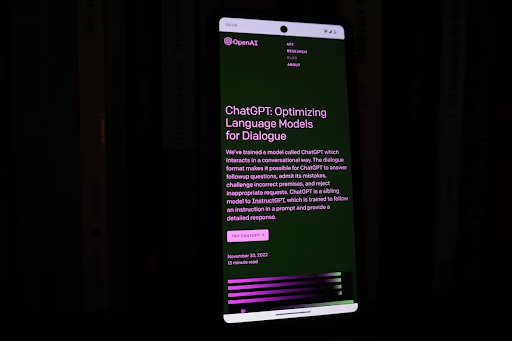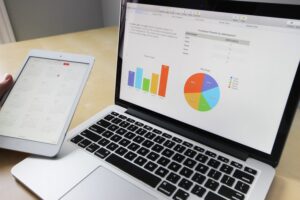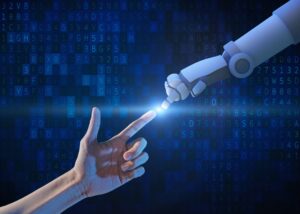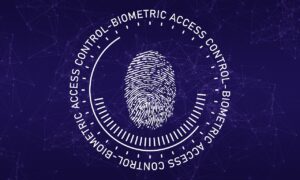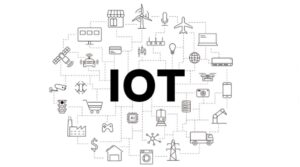You’ve interacted with generative AI even if you haven’t known it by that name. Consider when Dall-E creates images to spark your design work or ChatGPT constructs code or outlines narratives.
The more people use these tools, the more information they collect to advance. They become smarter with human-in-the-loop (HITL) processing, but is this something workforces want?
The Democratization of Complex AI
Generative AI feels like a technology only experts should use. It’s so complex and powerful, and technologies with this much influence have been historically guarded by companies and the wealthy. However, anyone with an internet connection can have ChatGPT give them marriage advice or a recipe based on the ingredients in their fridge. It’s even breaching workplace doors to help employees streamline operations. What are the side effects of this accessibility, and should it be encouraged?
Advanced technologies must become democratized for the mass population to adapt to new tech. AI is advancing faster than humans adapt, and because it will become foundational for everything from providing medical services to watering crops, everyone has to stay in the know. Gatekeeping generative AI would be a disservice to workforces because they couldn’t learn what organizations needed for future jobs.
“If generative AI becomes too capable of making fresh content, are jobs on the line as employers seek more intelligent, sleeker AI to take your place?”
Generative AI differs from other AI models because it produces new content instead of identifying patterns from existing data to find an already-present answer. Generative AI accessibility will allow people to discover new things and for workforces to enhance skill sets. Plus, it’s an introduction to new workplace expectations.
The Creation of Novel Jobs
Society-changing technology invariably leads to the invention of never-before-seen jobs. Social media managers didn’t exist before Facebook, and AI database managers didn’t before the first AI either. Talent acquisition teams and prospective candidates now have more complex yet exhilarating duties. Seek up-and-coming talent that embraces and perfects these skills in an emerging market when education hasn’t solidified curricula.
For a time, students may not have all the qualifications listed in the job announcement. Still, candidates will brag about their educational willingness, leadership skills and reliability to obtain results as resume highlights to get jobs.
The workforce must prepare for demand in generative AI jobs, but for a bit, there won’t be enough people to fill the seats. They will still be learning as corporate needs arise. Eventually, this desperation will transform into the steep competition. Notably, young professionals will see the fruitful opportunities of studying new AI tech, causing an influx of interest that companies will eventually need to cull to find the right minds.
“Seek up-and-coming talent that embraces and perfects these skills in an emerging market when education hasn’t solidified curricula.”
Here are some examples of roles and skills that will be necessary for future work:
- Engineer: Use analytical thinking and innovation to analyze prompts and the accuracy of responses.
- Data scientist: Discover gaps in data sets and source information to prevent anomalies and inaccuracies.
- Generative AI developer: Code, construct and update generative AI models.
- User experience research: Utilize problem-solving and reasoning skills to pose creative and practical solutions based on user-submitted concerns and queries.
- Ethics officer: Determine social influence and moral impacts of generative AI.
- Data curation: Manage the data sets for concept drift and biases.
- AI and human coordinator: Be the communicator between AI and human workforces.
The Adoption by Every Industry
You may worry your job is at stake because of incoming AI. Fortunately, many experts agree it’s unlikely AI will overtake human jobs completely. In reality, generative AI will probably create more jobs than it replaces. Teams will delegate repetitive, time-consuming tasks to AI that it can perform more accurately than people.
Generative AI will also supplement existing positions, potentially changing job descriptions. However, this should be a welcome shift. It means more posts require technological savvy, and work happens more efficiently.
“Worldwide and cross-industry adoption will create a widespread mindset shift that will change humanity’s relationship with generative AI.”
Generative AI will reshape the workforce because it will impact everyone. Sectors worldwide will see it implemented in a few of the following ways:
- Lawyers will use it to come to conclusions based on arguments.
- Production lines will generate simulations for potential equipment implementation.
- Entertainment companies will use it to suggest video game levels, background music or show scripting.
- Customer service will use it as an assistant for support.
- Cybersecurity analysts can use it to brainstorm vulnerabilities.
The possibilities are truly endless. Worldwide and cross-industry adoption will create a widespread mindset shift that will change humanity’s relationship with generative AI. It must happen because if companies don’t have employee buy-in for generative AI, they will surely lose out on profits and productivity boons that would otherwise come naturally.
The Changing Workforce With Generative AI
Generative AI can’t develop team relationships or negotiate business deals that change the world. However, it will permanently change the workforce by working alongside you in your professional journey — you may even focus your entire job around it.
Generative AI abilities allow humans to enter a new generation of technological assistance with the promise of lighter workloads and better quality of life if appropriately utilized. The more workforces adopt it, the better and more comprehensive data humanity will have to see if the investment was worth it.

